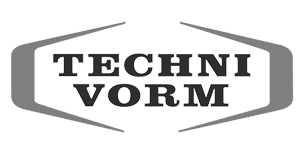What are the different steps of verification, validation and acceptance of newly developed products/systems?
Before a product is fully approved for development or sale, it must be verified, validated and accepted. This requires specific steps to be followed to make this efficient and qualitative. We explain these steps in this blog. Read on quickly!
Before going through the steps
Before the steps of verification, validation and acceptance are completed, a new product or system begins with a definition. In many cases, the V-model is applied. We are happy to explain this briefly.
At the beginning of every project, clear understandings and goals are established to begin the project. Here, among other things, the feasibility of the project and the technical design choices are determined. As a derivative, development costs are also determined. These choices are thoroughly investigated and determined after positive test and research results in order to proceed with development.
Next, the system architecture is determined, followed by the detailed design of the product's sub-blocks. Then the implementation is carried out for these sub-blocks. After completion of the implementation, the test steps follow where first the sub-blocks are verified in detail, followed by validation, integration and acceptance testing.
Verify, validate, integrate and accept products
After determining the insights, time frame and costs, development of the new product can begin. After going through the necessary steps, at some point the time will come for testing the new development. This testing has a number of stages or steps. Initially, the verification tests begin. These are tests to verify that it is made correctly. Is the device under test correct when compared to the designs and does it meet the specifications. If it does, the validation tests can begin. This is a test that examines whether the goals regarding validity and reliability of the product are met. Does the product meet the needs and wishes of the customer as previously determined, under different circumstances and situations.
The final acceptance test that follows the validation test actually examines the business case: does the system deliver in a controlled field environment what the customer expects it to deliver the intended benefit for him? In other words, are all the requirements achieved in practice? This test must of course be done by the customer/user. One also speaks of the UAT (User Acceptance Test). In Dutch: de gebruikersacceptatietest.
Verification, validation and acceptance at Confed
Our specialists have years of experience and knowledge in performing various tests. They will thoroughly investigate whether the verification tests, validation tests and acceptance tests are properly set up and whether they meet the set guidelines and requirements. Engaging the testing authorities is also part of this process and can take place under Confed's direction.
Want to know more about the verification, validation and acceptance that Confed performs on products/developments? Feel free to contact us. We will look at the possibilities for your company.
Choose Confed. Choose fast, reliable and quality.
Got curious?
Have you become curious about what we can do for you in this area? We would like to invite you to contact us. This can easily be done by phone or via our general email address. You can also send us a request via the contact page and we will get back to you as soon as possible.
Contact via:
info@confed.eu or tel: +31(0) 33 454 1340









